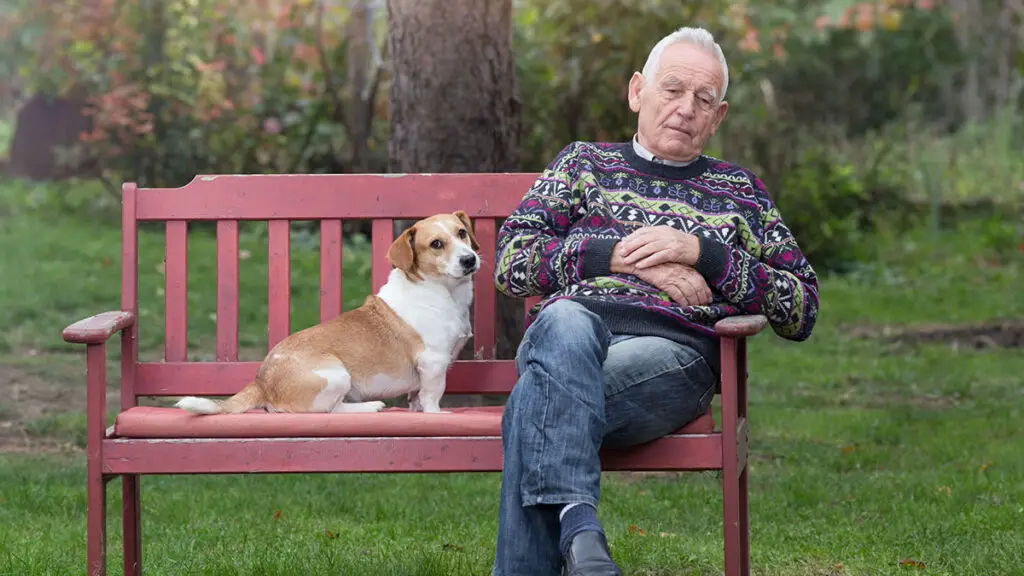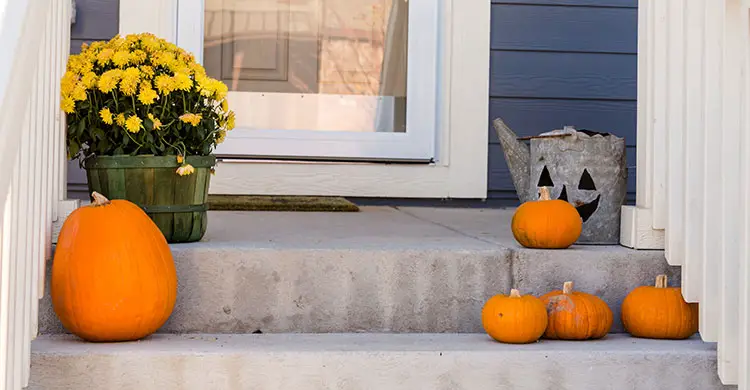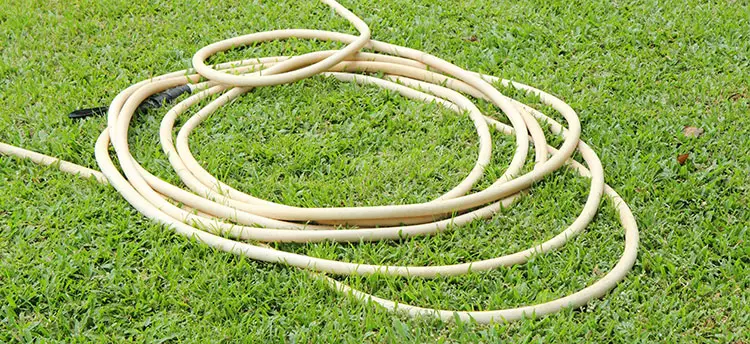This is the last article on home safety for the person with dementia. We covered the entire house generally, and then each room. We will now consider Alzheimer’s Disease outside safety, the space surrounding the house.
Read this article as a general guide on how to approach outdoor hazards, and then download and print the outside safety checklist below to use as you physically scan the environment around your home.
Alzheimer’s Disease Outside Safety Checklist (PDF)
Peruse the whole yard, all the surroundings of your home, starting with the entrance. Walk the entire property through the eyes of someone looking for something to get into, something forbidden, or something that may cause harm.
Being able to go outside to enjoy the sights, sounds, and fresh air is a plus and health benefit to anyone, physically and emotionally. The same is true for the person with dementia. An outdoor area will provide a place to exercise, enjoy nature, and rest.
If your yard is not enclosed by a fence, then it may have to be off-limits. In that case, it will be necessary to keep exterior doors locked at all times, with locks out of reach to the person with dementia, very high or low where they may not be accustomed to looking for them.
On the other hand, if your loved one is going to have access to the outdoors, you will have your work cut out for you to ensure that the yard is free from potential hazards. Having a fenced area is only the beginning. Here are some suggestions and further information to ensure optimal safety.
Start with the Entryway
Making the outdoors safe for the person with dementia can be a challenge. It is harder to provide smooth walkways outdoors than it is to do inside the house. If you want your loved one to have access to the outdoors, however, it will be necessary to make some changes in your yard.
Before looking at the area, which will likely be the backyard, start first with the entrance to the house. Viewing the front door, make sure the pathway that leads to it is clean and smooth.
- Preferably, a walkway will lead up to the front door.
- If you have stone steps, fill the spaces between them. Make sure someone with an unsteady gait won’t trip over uneven rocks.
- Imagine navigating a walker to the door. A bumpy rock path or an uneven lawn will be difficult for any older person, whether there is assistance available from another person or not. A trip leading to a subsequent fall is something you want to avoid.
- Make sure lighting illuminates the pathway all the way to the door. A well-lit path will be helpful in ensuring a stress-free walk and safe arrival to the front door. Besides being a visual aid, the light will put off an inviting aura from the home. The person with Alzheimer’s is often fearful of many things, dim lighting and darkness being paramount. Warm lighting that allows one to see his or her surroundings is one step toward alleviating any fears.
- Creating a smooth pathway that circles around the enclosed part of the yard will provide a safe walking area and distract from other areas of the yard that might be more difficult to navigate. A walking path should be circular with no forks in the path to cause confusing choices. Any pathway should also not have a dead endwhere the person must make yet another decision about what to do. If the path does dead end because of a pre-existing sidewalk or other condition, provide an attractive area at the end with comfortable seating for a rest area.
How Safe Are the Steps and Porch Leading to the Entrance?
Stairs, indoor or outdoor, are always dangerous. Make sure you have everything in place to make them as safe as possible.
- Steps to the door should be level and clear. If steps are too narrow for the whole foot to be placed, consider tearing out the steps and replacing them with foot-wide steps that are easier for feet to land on, or a ramp to walk up.
- A simple alteration that will help make the steps stand out better requires only a bit of paint. One option is to paint the rise on the step a different color from the step itself. To make this job simpler, you could just paint the edges of the steps or mark them by lining them with reflective tape.
- Handrails on the steps will also help ensure a safe arrival to the front door. Make sure they are steady and can hold someone’s full weight. If your loved one is in a wheelchair, you will have to completely replace the steps with a ramp to provide access to the house. A slip-resistant strip could add a touch of safety while also providing contrasting color.
- Have a chair on the front porch if the space allows. After a long walk to get to the front door, your loved one may be tired. If your pathway to the front is long, you might consider placing a bench along that walkway for a rest period halfway through. Having a chair just inside the home in an entryway could be a welcome respite as well. If space doesn’t allow for this, get your loved one to the closest chair once you get him or her safely inside.
- If your loved one is safe to be outdoors alone, he or she may still need help recognizing how to get back into the house. Wandering around the pathway, unable to find the door back to the house, can cause confusion and fear in the person with dementia. Continuing to walk and search with a lack of awareness of being tired can also lead to injury as the result of a fall.
- Put something recognizable next to the door that leads back into the house. Something that is bright and inviting by the sliding glass doors or whatever other entrance will provide a landmark that can be spotted. Consider a bright chair or pot of flowers, a statue, or perhaps a charming birdhouse or chimes. Whatever you use, make sure it is easily seen from the walking path.
Remove Anything That Could Cause Trips or Falls
So many items present trip hazards in the yard—things you probably don’t even think of. Look for rocks that stick up, whether big or small and remove them.
- Roll up water hoses to keep them out of the way.
- Statues and figurines may pose trip hazards. Move them and similar items to out-of-the-way places.
- Make sure tools are picked up and locked away in the shed or garage.
- Potted plants are tripping hazards and present other hazards. You will have to spend some time on the outside to research what plants might be toxic if eaten. Again, you can check the list the Poison Control Center puts out.
- Trim plants that stick out and may trip or hit someone in the face. Do this with all bushes and trees, trimming back to prevent poking and scratching.
Examine Gates and Fencing
A safe yard includes appropriate fencing that is sturdy and high. Check wood fences for rough surfaces that might have splinters. Sand any rough spots to protect bare hands. For metal fences, check for sharp edges and cover them. Whatever type of fence, it must be secure and able to withstand a person’s weight against it.
Is the fence high enough? Six feet should be adequate. Shorter fences are just too tempting, as one can see over it into the neighbor’s yard or the adjoining woods. To further ensure non-egress by way of the fence, chairs should not be placed close to the fence where they can be used for climbing to see what is on the other side.
Gates to the yard should be locked at all times. An alarm can be added for additional safety. Motion detectors can be installed in various areas to alert movement to certain areas of the yard. If the exit from your house is left unlocked for easy access to the backyard, add a bell or chimes to the door to signal that your loved one is going outside. Gates can be camouflaged by painting the latch the same color as the wood or perhaps hanging something that falls over the latch.
Avoiding Potential Serious Accidents
There are a number of other dangers that lurk in the yard.
- Swimming pools should be emptied and covered when not in use. Still, anyone can fall onto a covered pool and have trouble getting back up, particularly the more confused and frailer older adult. If a fence is not already surrounding the swimming pool, it may have to be installed, particularly if your loved one is allowed to roam in the yard unsupervised.
- People have been known to drown in only a few inches of water, so consider this even if your pool is merely a small decorative one with goldfish. Instead of getting rid of it, you might be able to keep your loved one out of harm’s way by putting decorative fencing around this type of area.
- Look around for other potential dangers in your backyard. What about your backyard grill? Covering up barbecue grills might be enough to keep attention from them. Gas grills, however, offer another temptation with knobs to turn. Storing grills, whatever kind, in a shed or garage when not in use is the safest course in preventing an accident.
Alzheimer’s Disease Outside Safety Summarized
Ensuring a safe and secure yard is something that needs to be monitored year-round. Many people use their yard for different leaving a greater chance of inappropriate and even dangerous items being left in an otherwise safe yard. Continue to monitor the yard for items left and pathways blocked.
The yard changes throughout the year and must be attended to on an ongoing basis. Gates must be checked, as should locks from time to time. Certain times of the year, due to extreme heat or cold, it may be prudent to completely deny access to the outdoors without supervision.
This is the seventh article in this series. Further articles will cover other rooms:
- General Home Safety
- Bathroom Safety
- Living Room Safety
- Kitchen Safety
- Bedroom Safety
- Hallways and Entryways
Check each of these articles as they become published to continue your home safety assessment.
Want to read my complete guide? Check out Staying Home.
- Grant, Derrick (Author)
- English (Publication Language)





